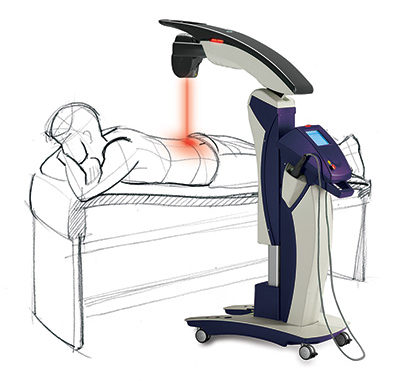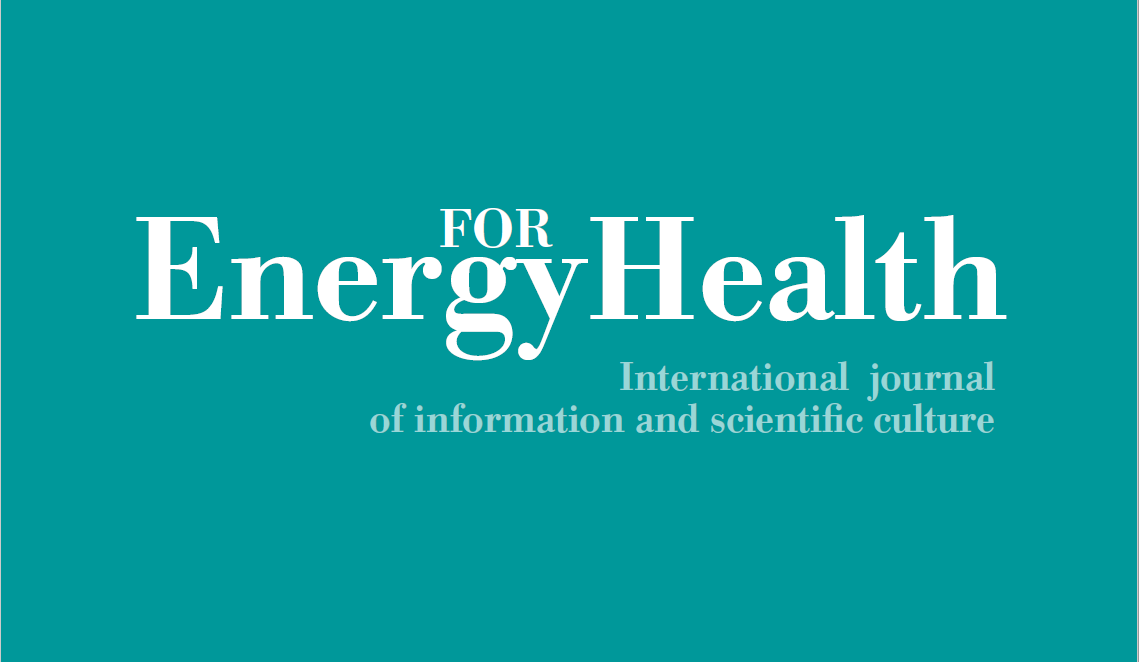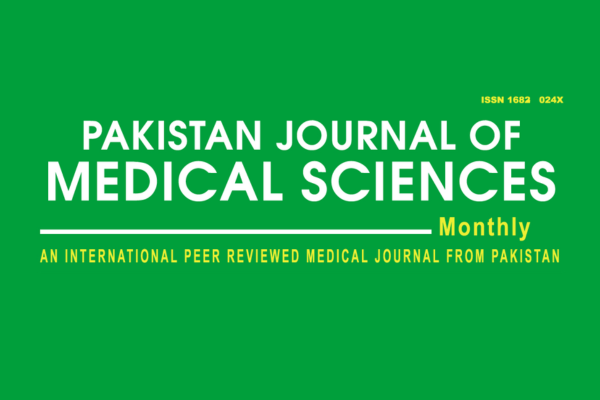The Science Behind
MLS® Laser Therapy
Overview of Laser Therapy

What is Laser Therapy?
Laser therapy uses light to favor and accelerate the body’s natural healing processes. The laser beam is moved over the skin so that the light energy (photons) penetrates the tissue where it interacts with various molecules (chromophores) that cause different biological effects. It produces a photochemical, photothermal and photomechanical effect.
There are many types of lasers. Each laser has different characteristics which produce a different effect. These characteristics include:
- Energy: measured in joules
- Time: Defined as the duration of irradiance of target tissue and is measured in seconds. It is also known as Impulse Duration or called “impulse width”.
- Wavelength: Penetration depth is directed by the laser emission wavelength and the type of tissue (chromophores).
- Frequency: Defined as the number of impulses emitted during the unit of time (1 second) and should reflect the condition treated.
- Power: the rate at which energy is delivered and is measured in watts.
- Fluence: Energy Density or Dose
- Irradiance (Also known as Power Density): Power delivered per unit area
- Emission Mode: Continuous Wave (CW) or Pulsed Wave (PW)
- Impulse Duration: Duration of laser emission, also called “impulse width”.
Benefits of MLS® Laser Therapy
No pain. All gain.
In the current economic climate, physicians are facing significant pressure to find new revenue streams. Reimbursements from insurers – the primary source of income for many practices – are declining sharply as a result of political reforms. At the same time, market forces such as increased competition and patient consumerism are adding to the pressure. In this environment, practice owners have limited options for strengthening their financial position. MLS Laser Therapy can help.
MLS Laser Therapy allows physicians to leverage technology to provide higher quality patient care, while attracting new clients, generating additional revenue, and ultimately improving businesses’ bottom line.
Clinical Benefits
MLS Laser Therapy is quickly becoming the standard of care in alleviating both acute and chronic pain. This patented, FDA-cleared technology has an 85% – 90% efficacy rate in relieving pain and inflammation, eliminates risk from surgery and prescription pain killers, has no negative side effects, and restores patients’ lives.
Financial Benefits
Practices benefit financially by:
- Combating declining reimbursements and generating revenue with a cash-based modality
- Realizing a rapid return on investment
- Accelerating patient recoveries
- Differentiating their practice
- Increasing patient satisfaction and referrals
Practitioners report that MLS Laser Therapy effectively treats pain and inflammation associated with the following conditions:
- Plantar Fasciitis
- Neuromas
- Neuropathies
- Arthritis
- Sports injuries
- Tendon & ligament injuries
- Back & joint pain
- Muscle sprains & strains
- Tendonitis
- Wounds
- Post-surgical swelling
- Disc disease
Biological Effects
Primary
Direct transfer of energy to the biological sublayers (endogenous or exogenic chromophores).
- Enzymatic activation
- Increase in ATP production
- Modulation of cellular metabolism
- Effect on pain perception threshold
Photothermic interaction is based on the conversion of option radiation into thermal energy which, at a microscopic level, occurs through the inelastic encounter between excited molecules following the absorption of photons.
- Increase in circulation
- Increased supply of oxygen and nutrients
The absorption of energy involves the formation of mechanical waves.
- Production of an extracellular matrix (important in tissue repair & regeneration)
- Acceleration of lymphatic peristalsis
- Re-absorption of edemas
- Reactivation of microcirculation
Secondary
- Increase in ATP synthesis
- Increase in the production of RNA
- Increase in cellular proliferation
- Induction of differentiation processes
- Release of growth factors (fibroblasts) and other substances
- Increase in the production of molecules of the extracellular matrix (fibroblasts & condrocytes)
- Modulation of the inflammatory processes
- Remodeling of the extracellular matrix
- Induction of lymphatic and vascular regeneration
- Stimulation of the endothelial function
- Reduction of the edema re-absorption times
- Prevention against the formation of scar tissue and hyperkeratosic lesions
Analgesic effect:
- Blocking of pain stimulus conduction
- Hyperemia and “wash out” of the algogenic substances
- Increase in endorphin synthesis
- Pain threshold modulation
Anti-inflammatory and anti-edema effect:
- Increase in the caliber and modulation of lymphatic and capillary vessel permeability
- Hyperemia and “wash out” of the pro-inflammatory molecules
Biostimulating effect:
- Increase in the supply of nutrients, oxygen and growth factors
- Cellular function activation
- Modulation of cell proliferation and differentiation (e.g., nerve regeneration)
- Increase of matrix protein synthesis
- Reduction of scar tissue formation
Laser Classifications
Low Level Laser Therapy (LLLT) Class 3B
These lasers use very low power, are limited to surface biostimulation, and often require many treatment sessions and long treatment times. Results are only achieved at the end of the treatment cycle, and results are limited because of the use of only one or two wavelengths that are not synchronized.
High Power (HP) Class IV
These lasers were developed with the expectation that greater power corresponded to better efficiency. On the contrary, unless suitably controlled, high power can thermally damage the treated tissue. Therefore, the majority of high power lasers cannot operate at their maximum power without causing damage.
Multiwave Locked System (MLS) Class IV
MLS Laser Therapy is a patented emission system created to achieve an efficient and simultaneous effect on pain, contracture, inflammation, and edema within a short period of time. The patented control system that generates the MLS pulse synchronizes the emissions to achieve optimum results. Due to this characteristic synchronization, the various therapeutic effects not only take place at the same time, but reciprocally reinforce each other, without the risk of thermal damage.
Science
The patented MLS pulse was developed as a result of nearly three decades of scientific research that studied the biological and therapeutic effects of different emission components and methods.
The departments of biology at both the University of Turin (Italy) and the University of Padova (Brazil), as well as the Department of Anatomy and the Orthopedic Clinic at the University of Padova have studied and verified the remarkable effectiveness of MLS Laser Therapy.
To read the MLS Scientific Report, click here.
A collection of studies that demonstrate the effectiveness of MLS Laser Therapy can be read here: MLS® Laser Therapy – Innovation is built on results
FDA Clearance
‘Mphi Family’ Diode Lasers – Mphi, Mphi5, Mphi Orange
Cleared via Section 510(k) on November 9, 2011, Number K111901
Conclusion: “The ASA ‘Mphi Family’ Diode Laser is a safe and effective device for the indications specified.”
Indications for Use: “The ASA ‘Mphi Family’ Diode Laser is intended to provide topical heating for the purpose of elevating tissue temperature for the temporary relief of muscle and joint pain and stiffness, arthritis pain, or muscle spasm, the temporary increase in local blood circulation and/or promoting relaxation of muscle.”
‘MLS Family’ Diode Lasers – MLS Mix5, MLS M1, MLS M6
Cleared via Section 510(k) on August 26, 2005, Number K051922
Conclusion: “The ‘MLSFamily’ Diode Laser is a safe and effective device for the indications specified.”
Indications for Use: “The ‘MLS Family’ Diode Laser is intended to provide topical heating for the purpose of elevating tissue temperature for the temporary relief of muscle and joint pain and stiffness, arthritis pain, or muscle spasm, the temporary increase in local blood circulation and/or promoting relaxation of muscle.”
Patent
MLS Laser Therapy is patented.
United States Patent, No. US 8,251,982 B2
Date of Patent: August 28, 2012
Abstract:
“Apparatuses and methods for applying laser energy for therapeutic purposes (e.g., relief of pain and/or inflammation in tissues) are disclosed. The synchronization of two spatially overlapping energy forms having closely positioned emission axes and particular emission modalities can in many cases provide strengthened or even synergistic effects in the alleviation or treatment of multiple of acute and/or chronic conditions (e.g., pain and inflammation) afflicting a given tissue. The laser energy forms are characterized in terms of their power levels, activation times, activation periods, pulse durations, pulse periods, wavelengths, and other identified characteristics.
Testimonials




FAQ
The most common MLS Laser Therapy indications are pain relief, intervertebral disc disease, degenerative joint disease, arthritic conditions, muscular/skeletal system trauma, and inflammatory conditions.
MLS Laser Therapy uses both the 808nm and 905nm wavelengths simultaneously. The 808nm wavelength is delivered using continuous emission while the 905nm wavelength is delivered using pulsed emission.
MLS Laser Therapy uses two wavelengths to overcome the limits of traditional Laser Therapy. Traditional Laser therapy does not deliver both wavelengths in a reinforcing and synchronized fashion. Continuous laser emissions act fast on inflammation, stimulating blood and lymphatic circulation and inducing fast re-absorption of fluid build ups; however they only have a secondary effect on pain, which is diminished after reducing the inflammatory process. Pulsed laser emissions, on the other hand, have a practically immediate effect on pain, since they are able to induce analgesia, interfering with the very transmission of the pain impulse to the higher brain centers, but they are less effective at treating inflammation and edema.
Yes, the FDA has cleared the use of MLS Laser Therapy and it is also patented via the U.S. Patent Office.
MLS Laser Therapy is able to induce strong anti-inflammatory, anti-edema, and analgesic effects simultaneously and within a short period of time. LLLT cannot achieve these results because of the limitations of using one or two wavelengths that are not synchronized. The patented control system that generates the MLS pulse synchronizes the emissions to achieve results previously unattainable. Thanks to this characteristic synchronization, the various therapeutic effects not only take place at the same time but reciprocally reinforce each other.
MLS Stands for Multi-wave Lock System. MLS is the name of the technology used that utilizes the patented combination of wavelengths.
Yes, MLS Lasers are Class IV therapy lasers that utilize our patented MLS technology to deliver controlled laser energy avoiding the risk factor of thermal damage to the tissue.
The depth of penetration varies due to tissue type, but it will penetrate 3-5 cm in most cases.
Results can often been seen after the first treatment. Most conditions have protocols that range from 6-12 treatments. The treatments are cumulative and are delivered 2-3 times per week for 2-3 weeks.
MLS Laser Therapy has been developed and tested following a strict course of biomedical and clinical research. The effectiveness of the combination of the emissions making up the MLS pulse was initially tested in vitro on cellular cultures, then in vivo on animals, and finally by means of controlled clinical trials run by major state-of-the-art health organizations for treating traumatic and degenerative painful diseases.
Clinical Studies

Successful Management of Diabetic Peripheral Neuropathic Pain Using MiS MLS Laser Therapy: A Case Report
A 67-year-old female patient diagnosed with type II diabetes and polyneuropathy of the lower extremities undergoes laser therapy to manage severe pain.

MLS Laser Therapy for the Management of a Non-Healing Venous Leg Ulcer: A Case Report
A 69-year-old female undergoes MLS Laser Therapy treatments to assist in the healing of a chronic venous ulcer on the lower leg.

Laser Photo-induced Effects: A Focus on the Photothermal Interaction
After introducing a classification of the photo-induced effects, this article concentrates on the photothermal ones, analyzing their role in both therapeutic effects and safety issues.

Observation on the Therapeutic Effect of Laser Acupuncture Combined with Schroth Therapy on Adolescent Idiopathic Scoliosis
This retrospective study explores the clinical effects of laser acupuncture combined with Schroth therapy on adolescent idiopathic scoliosis (AIS).

Comparison of the Effects of a Conventional Physiotherapy with Multiwave Locked System Laser Glenohumeral Joint Peritendinitis: A Randomized Trial
This study evaluates the therapeutical effects of MLS® laser and the combined therapy of microwave diathermy and interference current, in patients with glenohumeral joint peritendinitis. The intergroup analysis showed a greater improvement of MLS Laser Therapy in terms of pain reduction at the end of the treatment and at the mid-term follow-up visit.

Successful Treatment for Neuropathic Pain with MLS®: A Case Study
This study explores the efficacy of the MLS® laser in the treatment of neuropathy and in combination with the treatment of OSA and bruxism as a mechanism for nerve entrapment demonstrates a long-term cure.
